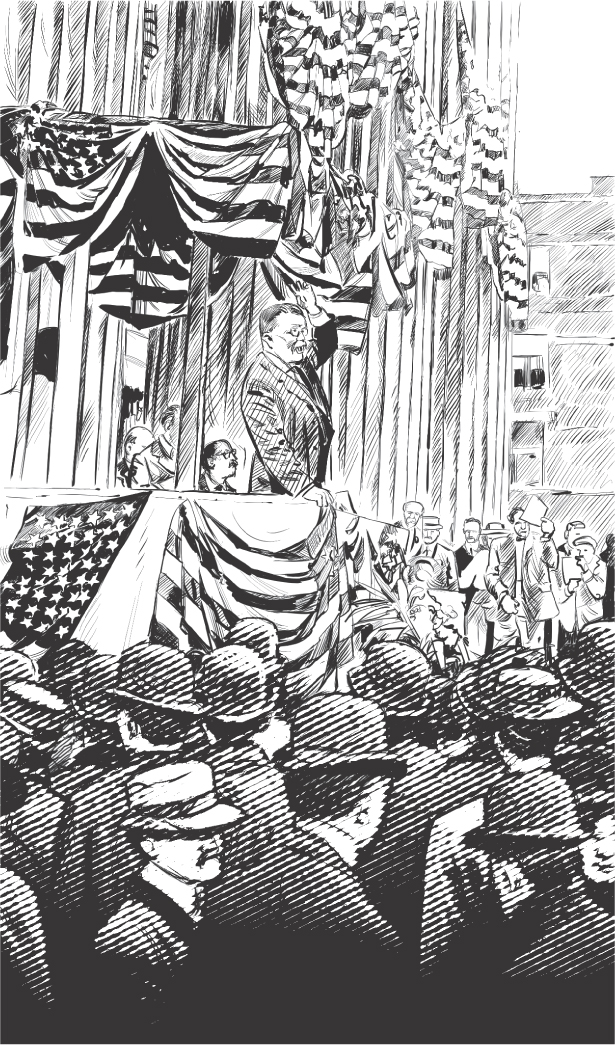
Chapter 5
Path to the White House
As 1900 began, President William McKinley was running for a second term. He was also looking for a new vice president. Republican party leaders chose Roosevelt as McKinley’s running mate. The president liked Roosevelt, and the young governor worked hard during the presidential race. Roosevelt traveled the country and spoke in front of several million people. At times, he gave seven or eight speeches each day. In November, McKinley and Roosevelt easily won the election—some people called it a landslide. Roosevelt became vice president in March 1901. He was just forty-one years old.

Roosevelt had few official duties for the first few months. He ended up spending a lot of time at Sagamore Hill with Edith and the children. By now, Alice was a young woman of seventeen, Ted Jr. was almost fourteen, Kermit was eleven, Ethel was nine, Archie had just turned seven, and Quentin was a toddler of three. Roosevelt also took some time to go hunting in Colorado. Writing back home to Ethel, he said, “I have had great fun.”

Roosevelt was enjoying a leisurely summer. But on September 6, while relaxing in Vermont, he received startling news. President McKinley had been shot by Leon Czolgosz, a former mill worker, while visiting Buffalo, New York. McKinley died on September 14, and Roosevelt was sworn in as the twenty-sixth president of the United States. At forty-two, he became the youngest president in the history of the country.
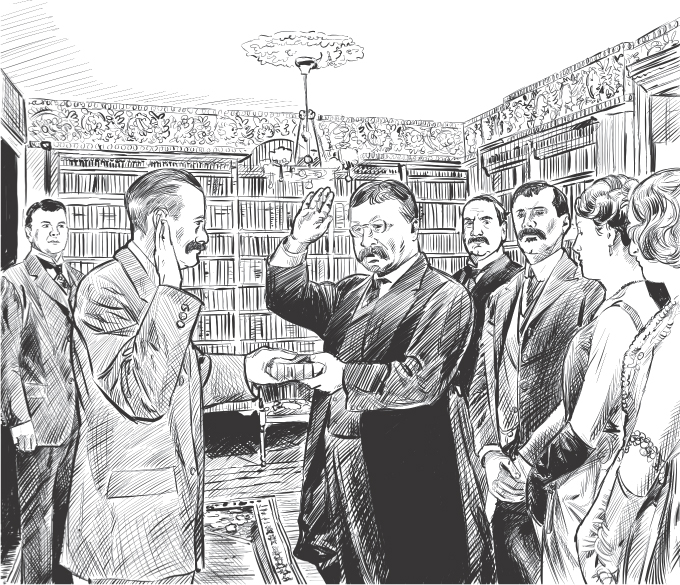
To some Roosevelt might have seemed too young. But he had almost two decades of political experience behind him and had demonstrated his courage on the battlefield. He had also shown his great intelligence through the many books he had written over the years. And he could get along with anyone—from the cowboys he met in the American West to the wealthy people he knew in New York.
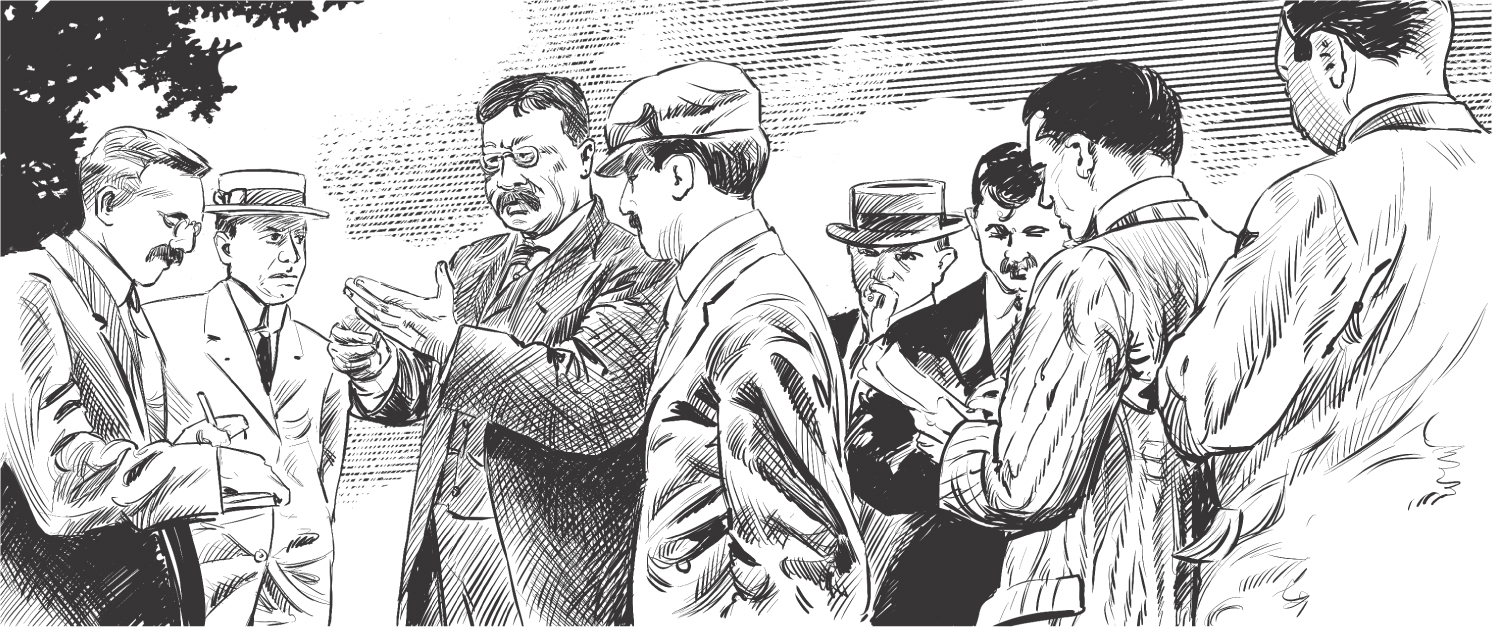
The American people enjoyed having a youthful president who seemed to enjoy life and who knew how to communicate openly with them. He often met with the press to discuss the issues of the day. He gave many speeches. Roosevelt called his new office a “bully pulpit,” which meant that he was in an excellent position to make his ideas and opinions heard.
THE TEDDY BEAR
DURING A HUNTING TRIP IN 1902, FRIENDS HUNTING WITH ROOSEVELT IN MISSISSIPPI CAME UPON A SMALL BEAR. THEY CAPTURED IT AND TIED IT TO A TREE SO ROOSEVELT COULD EASILY KILL IT. WHEN THE PRESIDENT SAW THE SMALL, INJURED BEAR, HE REFUSED TO KILL IT. BUT WHEN THE PRESIDENT SAW THAT THE SMALL BEAR WAS SERIOUSLY INJURED, HE ORDERED IT TO BE PUT OUT OF ITS MISERY. WORD OF THIS REACHED THE PRESS. PEOPLE PRAISED HIM FOR SHOWING MERCY ON THE BEAR. A CARTOON APPEARED IN THE NEWSPAPERS OF ROOSEVELT WITH A BEAR CUB AND THE STORY QUICKLY SPREAD. MORE CARTOONS OF THE BEAR FOLLOWED. LATER THAT YEAR, STUFFED BEARS FROM GERMANY WERE BEING SOLD IN NEW YORK AS “TEDDY BEARS.” ROOSEVELT WAS QUOTED AS SAYING, “I DON’T THINK MY NAME IS LIKELY TO BE WORTH MUCH IN THE TOY BEAR BUSINESS, BUT YOU ARE WELCOME TO USE IT.”
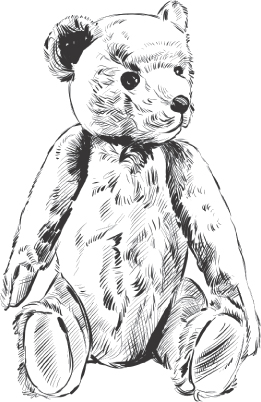
Roosevelt was eager to carry out his policies of reform. He wasted no time challenging large companies that were harmful to the country. In 1902 the government started a legal case against a railroad company that Roosevelt thought was too big and powerful. The large company was called a trust. Roosevelt thought the railroad trust should be forced to separate into smaller businesses. After the government won the case, Roosevelt was known as a “trust buster.”
Later that year, the country faced a huge coal strike. Coal miners in parts of Pennsylvania refused to work unless they got better pay and working conditions. The mine owners refused to meet their demands. Roosevelt stepped in to help settle the strike. Presidents in the past had usually sided with business owners when they faced strikes. Roosevelt said he did not speak for the owners or the miners. “I speak for . . . the general public.” But he thought the miners should be treated fairly. Roosevelt believed all Americans deserved that fair treatment. It was part of what he called the “Square Deal for the country.” The miners agreed to end the strike and accept the proposals of a government commission studying their work conditions. In the end, the miners got their own square deal: more money and a shorter workday.
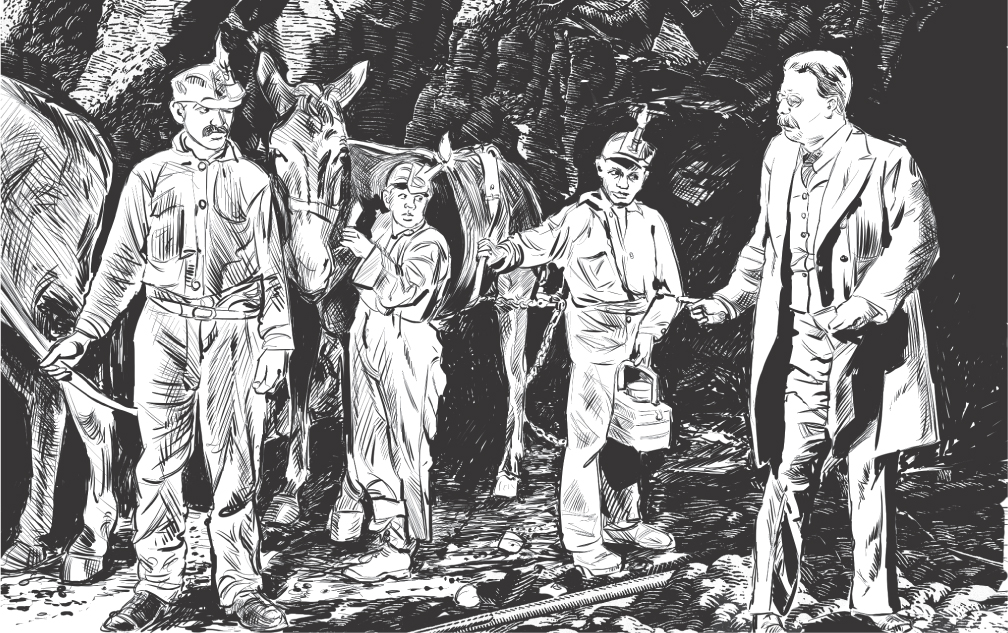
As president, Roosevelt also focused on international matters. The United States wanted to build a canal in Central America to link the Atlantic and Pacific Oceans. At that time, ships had to sail a long route all the way around the southern tip of South America to go from the East Coast of the US to the West. The planned canal would shorten the trip by almost eight thousand miles. Roosevelt mistakenly thought he had a deal to buy land in what is now Panama to dig the canal. At that time, however, the land belonged to Colombia. And the Colombian government was asking for more money than the US wanted to pay.
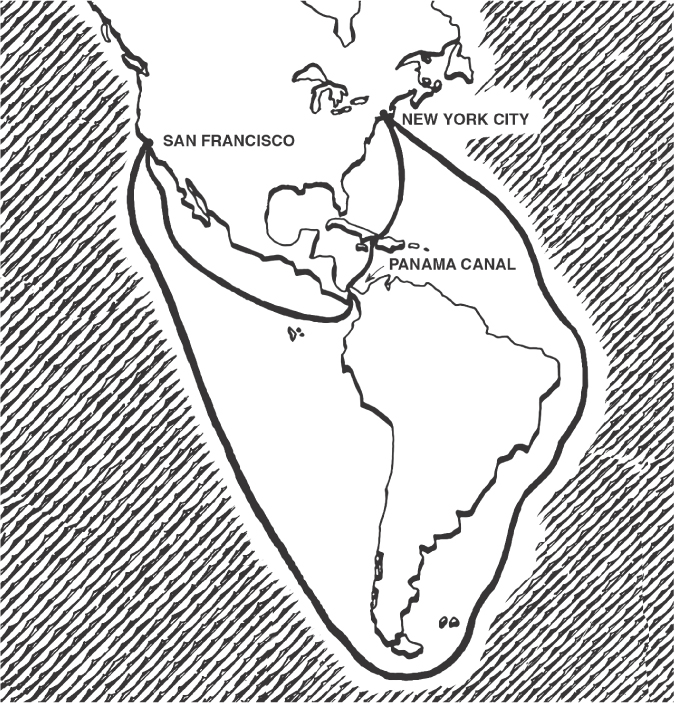
People in the region of Panama, however, wanted the canal as much as Roosevelt did. So they made plans to break away from Colombia and become an independent country. Roosevelt supported the revolt. In November 1903, he sent warships to the coast of Panama. The rebels in the region knew the US supported their revolution, and so they arrested their Colombian leaders. The presence of US forces and payments made to Colombian troops ended the revolt peacefully. Panama had its independence, and Roosevelt bought land from Panama for the canal. It wasn’t finished until after Roosevelt’s presidency had ended. But his actions made the Panama Canal a reality. Three years later, Roosevelt went to Panama. He became the first president to ever visit a foreign country while in office!
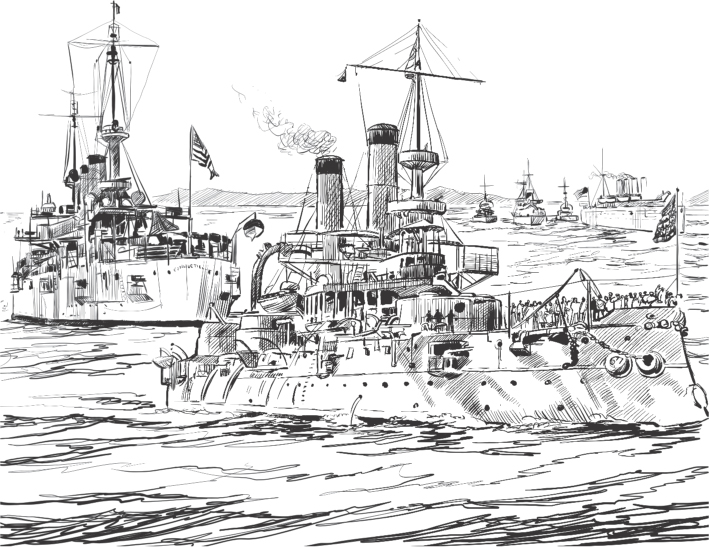
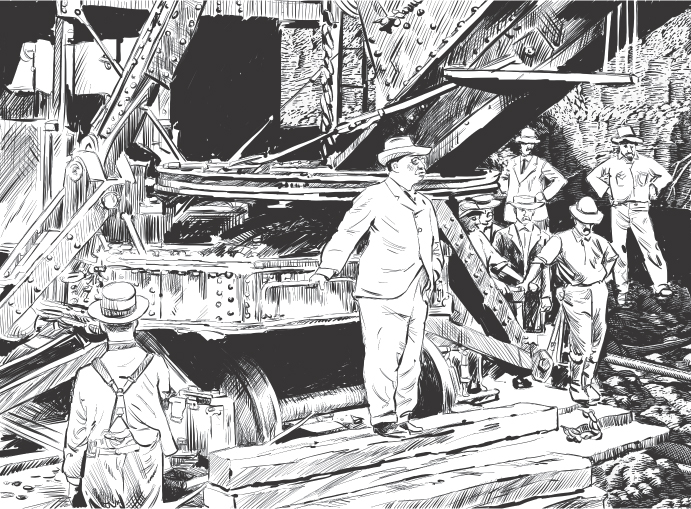
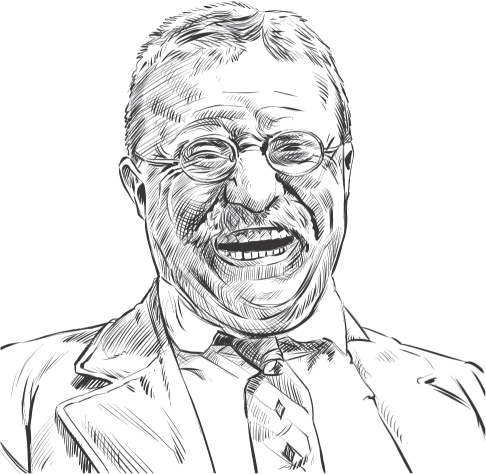
A PALINDROME IS A WORD OR PHRASE THAT READS THE SAME BOTH BACKWARD AND FORWARD, SUCH AS THE WORD NOON. ONE OF THE LONGEST AND MOST FAMOUS PALINDROMES INVOLVES THEODORE ROOSEVELT AND HIS EFFORTS TO BUILD THE PANAMA CANAL: A MAN, A PLAN, A CANAL: PANAMA! THE MAN, OF COURSE, IS ROOSEVELT. THE PHRASE WAS CREATED YEARS AFTER ROOSEVELT’S DEATH BY A WELL-KNOWN PALINDROME MAKER, LEIGH MERCER OF GREAT BRITAIN.